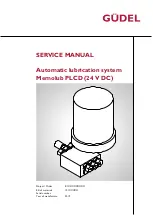
Appendix C
Common Questions
©
National Instruments Corporation
C-5
4.
Initiate AO waveform generation.
If you are using NI-DAQ, call
WFM_Group_Control
with operation
set to 1 (start).
If you are using LabVIEW, you can invoke AO Control VI with control
code set to 0 (start).
Can I programmatically enable different channels on an E Series
board to acquire in different modes? For example, Channel 0 is
differential and Channel 1 is RSE.
Different channels on an E Series device can be enabled to acquire in
different modes. However, different pairs of channels are used in different
modes. In the example configuration given above, ACH0 and ACH8 would
be configured in differential mode and ACH1 and AIGND would be
configured in RSE mode. In this configuration, ACH8 could not be used in
a single-ended configuration. To enable multi-mode scanning in LabVIEW,
you would use the
coupling & input config
cluster input of the AI Config
VI. This input has a 1-to-1 correspondence with the channels array input of
the AI Config VI. Therefore, you must list all channels either individually
or in groups of channels with the same input configuration. For example, if
you want Channel 0 to be differential and Channels 1 and 2 to be RSE.
Figure C-1 demonstrates how to program this configuration in LabVIEW.
Figure C-1.
Configuring Channels for Different Acquisition Modes in LabVIEW
I am seeing crosstalk or ghost voltages when sampling multiple
channels. What does this mean?
You maybe experiencing a phenomenon called charge injection, which
occurs when you are sampling a series of high output impedance sources
with a multiplexer. Multiplexers contain switches, usually made of
switched capacitors. When one of the channels, for example channel 0, is
selected in a multiplexer, those capacitors accumulate charge. When the
1:2
















































